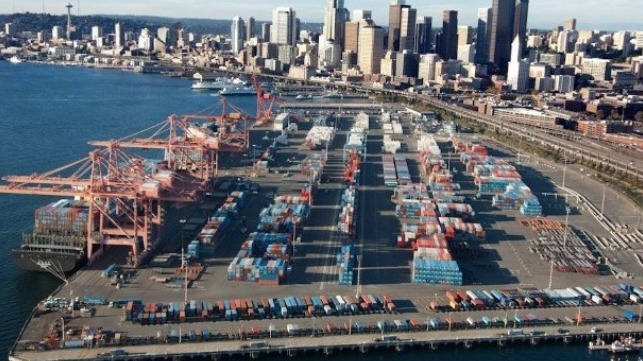Seattle Postpones Terminal 46 Cruise Port Development Due to COVID-19

The Port of Seattle is canceling its request for proposal for a new cruise terminal that it had planned to develop in response to growing demand from the cruise industry. Citing the current uncertainty due to the impact of COVID-19 and the need to focus on public health the port is deferring the project but will continue work on the site development.
“Our current focus remains on public health,” said Port of Seattle Executive Director Steve Metruck. “We continue to work with public health partners and cruise stakeholders to determine the enhanced procedures that will make our cruise passenger terminals and facilities safe for the community, passengers and crew in 2021. The last two decades of growth indicate that there is durable demand for Seattle cruises. When we can, we will convert that demand into more business opportunities and jobs for our region.”
Cruising has become an integral leading business line for the Port of Seattle and an important part of the region’s maritime and regional economies. Before the COVID-19 pandemic, the Port of Seattle was forecasting a record year for 2020 with 233 cruise vessels scheduled to sail from Seattle. With an estimated 1.3 million revenue passengers expected to travel to and from our terminals this season, cruise supports 5,500 jobs, and provides nearly $900 million in economic activity for the region.
The Port of Seattle had been successfully building its role as a cruise port in the past few years, successfully attracting major cruise lines to shift operations from Vancouver. The port had made significant investments that Seattle highlighted including its position as the only homeport in North America with a voluntary clean water agreement between the port, the cruise lines, and state regulators. On the shore side, over 80 percent of the cargo-handling equipment at the port’s cruise terminals is powered by clean fuel technology. An early adopter of clean electric “shore power” for ships at berth, Seattle also provides clean shore power at two cruise berths at Terminal 91. The port is also pursuing a clean waterfront electrification strategy, committing to expanding clean energy to more terminals throughout the harbor.
In 2019, Seattle was working on the plan for the new cruise terminal and moving forward with several key steps including identifying potential partners and doing site and impact studies. In April 2020, the Port of Seattle, however, announced that it was suspending its planning for a new cruise terminal to serve the Alaska market, citing a need to better understand the short and long-term cruise industry market impacts from COVID-19 before continuing its project investment in additional cruise facilities. As a result of this analysis, the port decided to cancel its request for industry proposals for a joint investment to build and operate a proposed new cruise terminal at the preferred location of Terminal 46.
Prior analysis of the cruise market and cruise ship deployment supported the need for a fourth berth to meet the demand for Port of Seattle cruise services. A cruise terminal requires a deep-water berth, a building to process passengers, a ground transportation area, long-term parking for cruise passengers, associated utilities, and connection to the local transportation system.
The Port of Seattle and Northwest Seaport Alliance said it will continue with prior projects to make Terminal 46 more sustainable and durable for long-term general maritime use, including installing stormwater treatment infrastructure and rehabilitating the dock. Vessel berthing and maritime support will continue on the terminal and the port will prepare a recommendation for the cruise terminal project when there is greater certainty about the demand for Port of Seattle cruise services.
